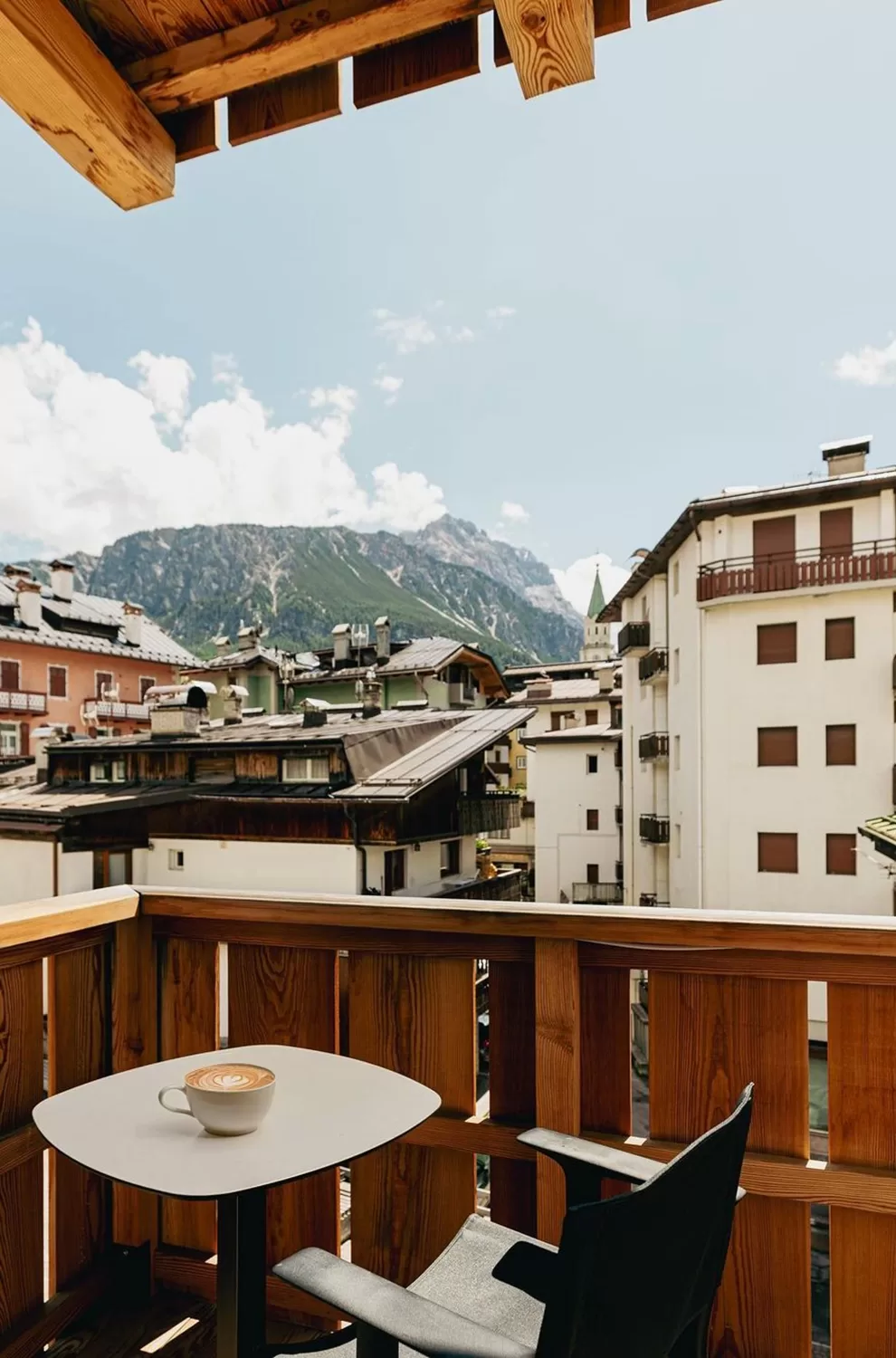A couple of hours north of Venice, a mountain range with 18 jagged limestone peaks that rise to nearly 10,000 feet stretches across northeastern Italy and extends to the Austrian border. These are the mighty Dolomites, inscribed on the UNESCO World Heritage List for ‘some of the most beautiful mountain landscapes anywhere.’
Popular for skiing in the winter and hiking in the summer, the Dolomites were part of the Austro-Hungarian empire until 1918, when the region was annexed to Italy. In some towns, German is still as widely spoken as Italian. The similarities don’t end there – the architecture looks more Alpine than Mediterranean, and local specialities include fondue, apple strudel, and Vov, a sort of Italian eggnog. Read on for our guide on how to best spend 48 hours in the region for a magical winter holiday.
DAY ONE
Where to stay
One of the most charming towns in the Dolomites is Cortina d’Ampezzo, which has long drawn the crème de la crème for ski holidays. While Cristallo – Cortina’s grand dame, built in 1901 – undergoes a renovation and rebrand as a Mandarin Oriental, you might choose to stay at the Hotel de Len instead. Right in the centre of town, the hotel is run by Egnazia Ospitalità Italiana, the group behind Puglia’s luxurious Borgo Egnazia. It brings a contemporary Alpine style to Cortina.
Or, if you don’t mind a bit of a drive, Hotel La Perla is about an hour away in the town of Corvara in Badia. A member of the Leading Hotels of the World, it was opened by Annie and Ernesto Costa in 1957 and is now run by their sons, who have added unique features like an interactive wine cellar, a Michelin-starred restaurant, and an après-ski club.


Embrace the season
Avid skiers should buy a Dolomiti Superski pass, which gives you access to 745 miles of slopes and 450 lifts at 12 ski resorts throughout the region. But even if you don’t ski, you might want to take the lift up Tofana to enjoy lunch or just some apple strudel and Vov at Ristorante Col Druscié 1778 while admiring the views.
When you’re ready to head back down, the charm of Cortina awaits. Stroll the streets lined with pastel buildings that imbue the town with a whimsical atmosphere. In the centre, you’ll find designer boutiques like Dior and Louis Vuitton, as well as independent shops selling chic cashmere sweaters and other winter gear. Paoletti di Follina 1795 sells especially beautiful cashmere and knitted clothing for women.


Dinner at Baita Fraina
Located on a mountain road just outside the centre of town, this family-run B&B may look traditional, with small wood-panelled rooms that resemble German stube, but its restaurant presents regional specialities in a modern way. Try the casunziei, half-moon-shaped ravioli filled with beets, which you’d be hard-pressed to find elsewhere in Italy.


DAY TWO
Alternative winter activities
If you want a break from skiing, drive 25 minutes northeast from Cortina to Lago di Misurina, a picturesque lake at the foot of the Tre Cime di Lavaredo. Hitch a ride aboard a snowmobile and ascend to the peak, which is 7,654 feet above sea level. At the Rifugio Auronzo, one of the many mountain huts that host hikers in the summer, you can borrow a wooden sledge and whiz back down the mountain.


Spa time
After the exhilaration of sledging, you might want to take a break and relax at the spa. Hotel de Len has a rooftop spa with saunas and an open-air hot tub with views of the mountains, while Hotel La Perla has an indoor pool with hydrotherapy jets in addition to saunas and a Turkish bath. To really get the kinks out, treat yourself to a massage.


Dinner at SanBrite
Chef/owner Riccardo Gaspari has earned many accolades – including a Michelin star as well as a green star for sustainability – at his gourmet restaurant SanBrite. He’s one of the chefs leading the way with regenerative cooking, which means taking care of the territory by ensuring a circular supply chain.
If you’re not in the mood for a lengthy tasting menu, make a reservation at his agriturismo, El Brite de Larieto. There, he produces butter, cheese, and yoghurt as well as charcuterie and serves them incorporated into more traditional dishes, like a fantastic fondue. Both restaurants have an elegant, paired-down design inspired by Alpine mountain huts. You can even pick up some of his artisanal cheeses to bring home at the little shop attached to SanBrite.




















